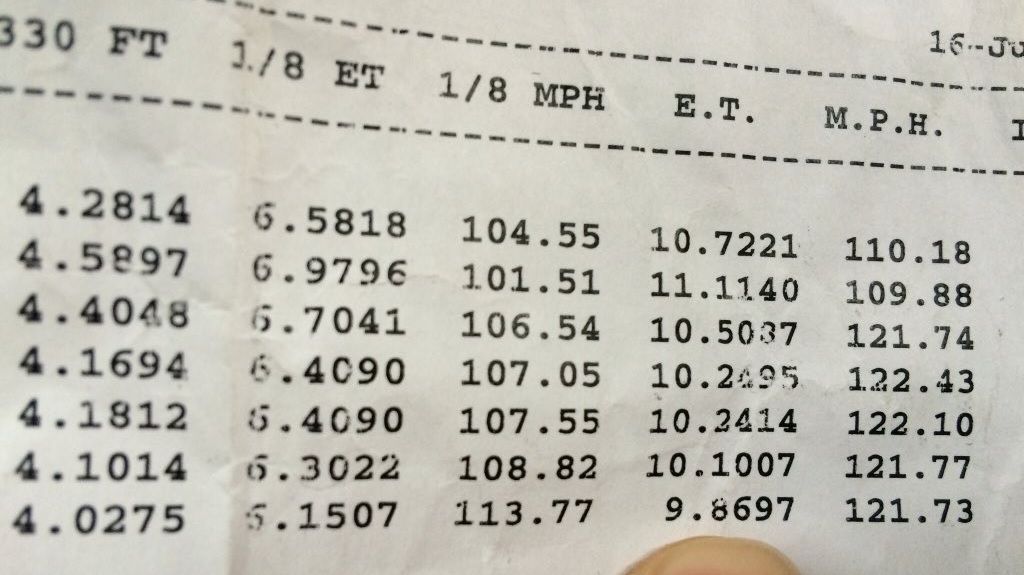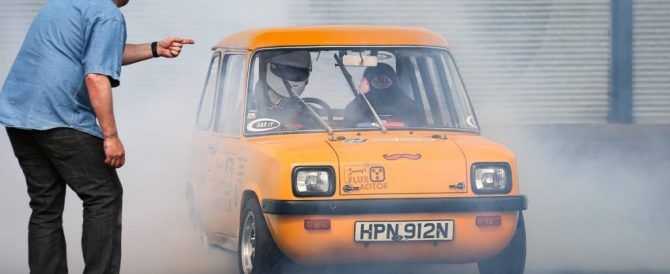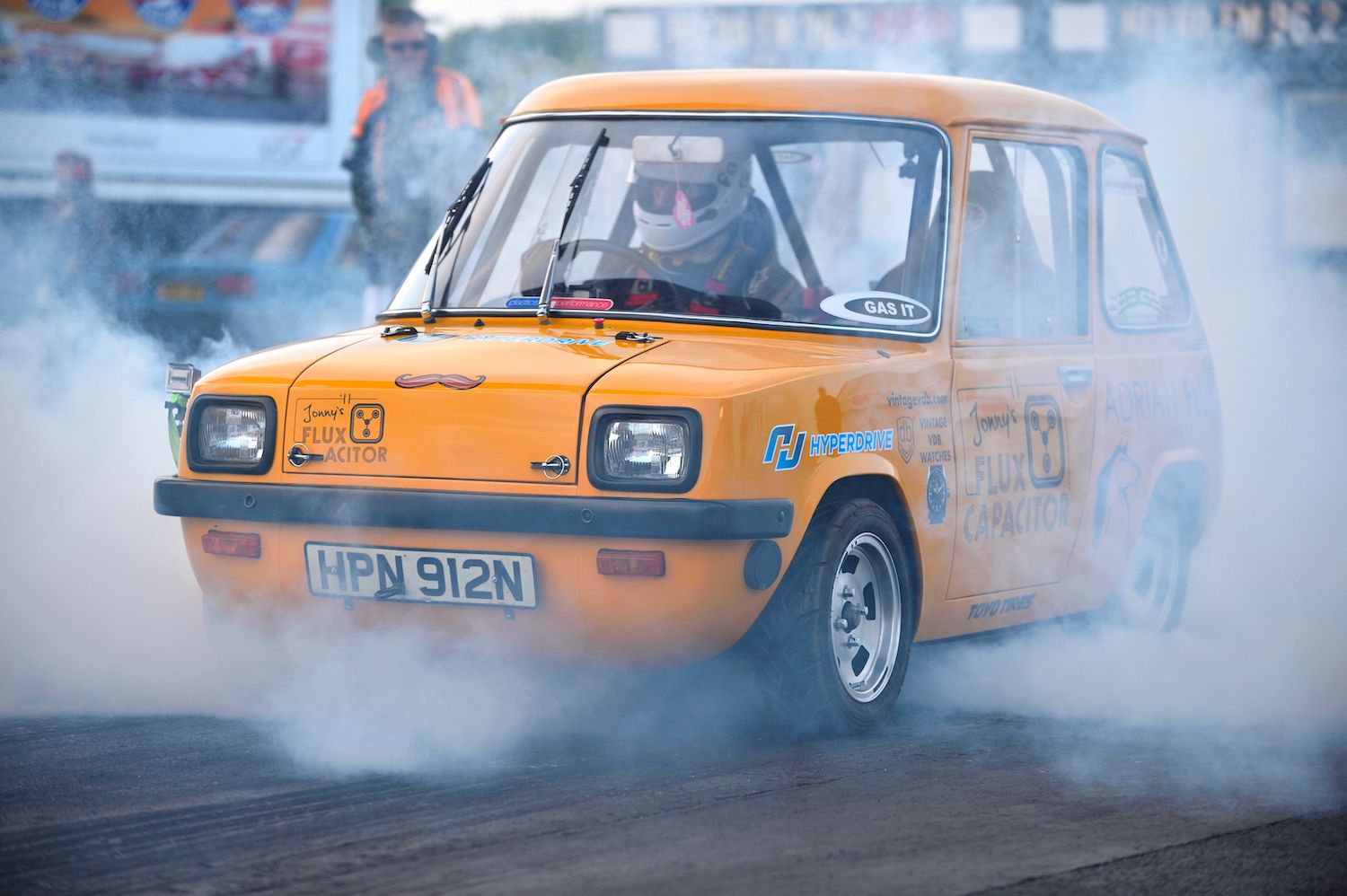Have you ever heard of an Enfield 8000? Chances are that unless you were born in the 1960s and lived in the United Kingdom throughout your younger years, you probably don’t. The Enfield 8000 was a battery-powered electric car that was produced by Enfield Automotive between 1973 and 1977. That’s right; the U.K. had a battery-powered car more than 40 years ago. Pretty wild right? Well, this story is about to get even wilder and, to be honest, a little crazy.
How crazy you ask? So crazy that one of these mid-1970s Enfield 8000s has officially become the world’s fastest street-legal electric vehicle. If that’s not crazy enough for you, what if I told you this little British EV put a beat down on the Lamborghini Aventador, McLaren 650S, Porsche 911 Turbo S, the Nissan GT-R, and even Tesla’s Model S P90D. I’m sure you don’t believe me, but that display image you see above – that’s the time slip proving that this car is no joke.
As you can see, the car – which goes by the name “Flux Capacitor” – made a number of runs, but its last one was the most important. It was able to travel 330 feet in 4.02 seconds and hit an eighth-mile in just 6.15 seconds at 113 mph. The whole quarter mile sprint took 9.86 seconds with a speed of 121.73 mph, and it did it all on battery power without any exterior aerodynamic enhancements.
Keep reading to learn more about Flux Capacitor
The Enfield 8000
Enfield Automotive, which was owned by a Greek millionaire named Giannis Goulandris, built the Enfield 8000 as a response to the oil crisis of the 1970s. It was supported by a tubular chassis frame and had aluminum body panels. And, to be quite honest, it was kind of a mutt. Most of its suspension system came from the Hillman Imp, while the doors came from Mini and the rear axle was borrowed from Reliant’s three wheeler.
The car was powered by lead-acid batteries and had an eight horsepower electric motor. As you can imagine, this thing was a complete turd, with top speed coming in around 48 mph. It did have a range of around 40 miles, which really pretty crazy considering some of the best plug-in hybrid models available today have less than 40 miles of all-electric range, and they have efficient lithium-ion battery packs in tow. Anyway, as the story goes, the initial production run gave birth to just 120 cars – 65 of which were used by England’s Electricity Council as fleet vehicles. Enfield was later merged with Green Neorion, and production of the 8000 was moved to a new location where nearly 100 more examples were built.
So how did a car that originally had lead-acid batteries and an eight-horsepower motor pull a nine-second quarter mile?
The Flux Capacitor
Four years ago, Jonny Smith acquired the car which, at the time, was written off for flood damage. From that point on, Smith began to restore the vehicle while adding a bit of modernization. The exterior is bone stock, and hasn’t be altered in any way, but under the skin you can find 188 lithium-ion battery cells, and two nine-inch electric motors at the rear axle. The battery pack produces 2,000 amps and 400 volts. If that sounds like a lot, that’s because it is. The two electric motors manage to put more than 800 horsepower and 1,200 pound-feet of torque to the pavement. I promise, that's no typo.
The battery cells are actually the same units used for starting the engines of a Bell Super Cobra attack helicopter and to power the onboard miniguns. What’s really crazy, the car has a wheelbase of just 68-inches and to be considered road legal, it has to have treaded tires and no wheelie bars. Be that as it may, Smith claims the car handles great. “I’m in awe of what this little yellow thing can cope with. The car never feels like it is out of its comfort zone. To be honest, I have disconnected the speedo, and just drive it by feel. You quickly forget how small it is when the lights go green. The instant electric torque delivery is something I have never experienced in over 15 years of driving and testing sports cars.”
For those of you who don’t know, Smith has been presenting Fifth Gear since 2006, and is a known automotive journalist and car modifier. I think it’s about time we depart from this story, but before you go, you might as well see the Flux Capacitor in action, so here’s a video for your viewing pleasure:




